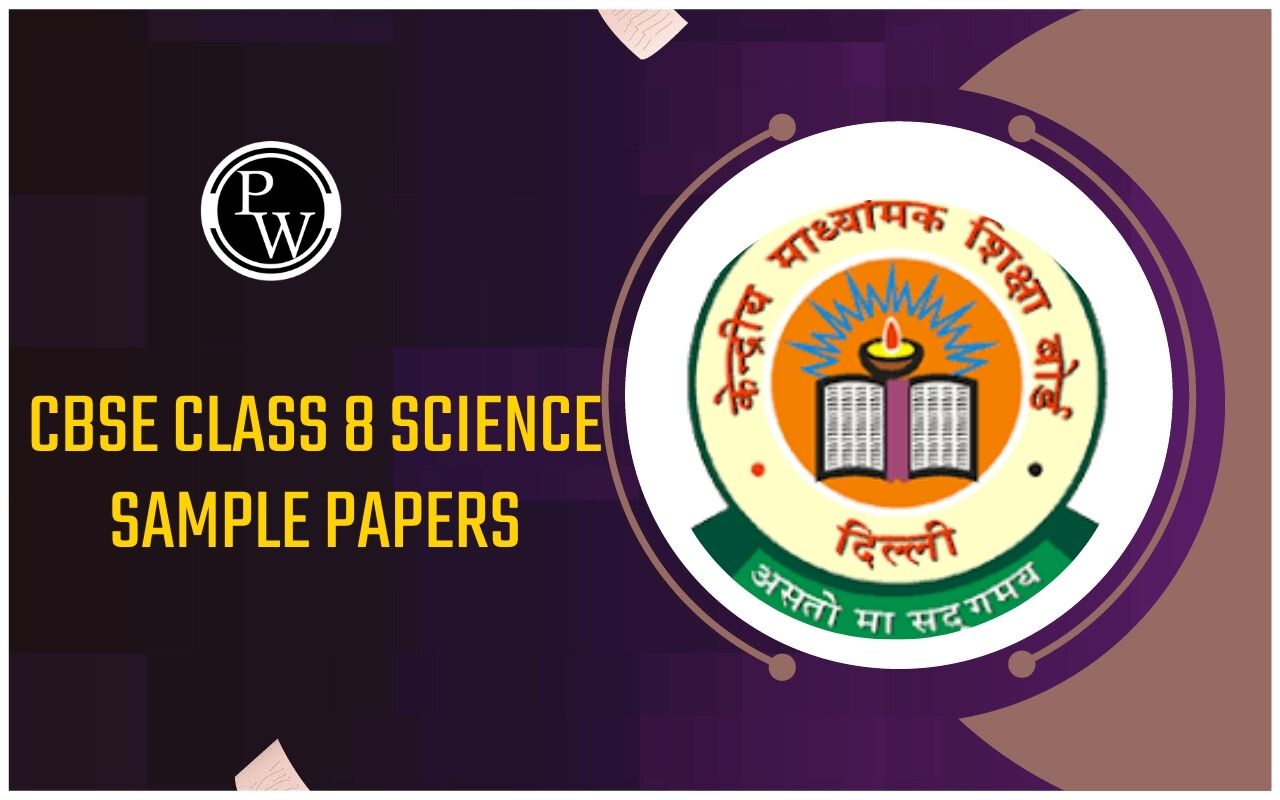
NCERT Solutions For Class 8 Science Chapter 7: For the Class 8 students, NCERT Solutions for Class 8 Science Chapter 7 Conservation of Plants and Animals is a crucial chapter. The purpose of this PDF solution for Conservation of Plants and Animals is to assist students in understanding the chapter simply and engagingly and to help them clear up any confusion they may have. Experts in the field have prepared these NCERT Solutions by the most recent CBSE syllabus.
Answers to the questions in the textbook are included in the NCERT Solution, which also includes additional questions from Class 8 question papers, workbooks, MCQs, HOTS, and short answer questions. For kids preparing for their board exams, these NCERT Class 8 Science Solutions may be the ideal educational resource. Students in Class 8 would be able to understand the conceptual meaning of each problem pretty well if they studied our NCERT Solutions. To effectively prepare for their exams, students need to consistently rehearse the Class 8 Science NCERT Solutions.NCERT Solutions For Class 8 Science Chapter 7 Overview
The NCERT Solutions for Class 8 Science Chapter 7: "Conservation of Plants and Animals" is available here. These answers provide a thorough understanding of the important ideas of biodiversity and environmental conservation. Our dedication to offering these tools without charge guarantees that all students have fair access to high-quality learning resources, supporting them as they pursue their academic goals. Topics covered in this chapter are -- Introduction to Conservation of Plants and Animals
- Deforestation and Its Causes
- Consequences of Deforestation
- Conservation of Forest and Wildlife
- Biosphere Reserve
- Flora and Fauna
- Endemic Species
- Wildlife Sanctuary
- National Park
- Red Data Book
- Migration
- Recycling of Paper
- Reforestation
NCERT Solutions For Class 8 Science Chapter 7 PDF
Here we have provided NCERT Solutions For Class 8 Science Chapter 7 for the ease of students so that they can just download the pdf and use it easily without the internet. These NCERT Solutions for Class 8 Science Chapter 7 will help students understand the chapter better.NCERT Solutions For Class 8 Science Chapter 7 PDF
NCERT Solutions For Class 8 Science Chapter 7
Here we have provided NCERT Solutions for Class 8 Science Chapter 7 for the ease of students so that they can prepare better for their exams.1. Fill in the blanks.
(a) A place where animals are protected in their natural habitat is called a _________.
(b) Species found only in a particular area are known as _______.
(c) Migratory birds fly to faraway places because of __________ changes.
Soln:
(a) A place where animals are protected in their natural habitat is called a sanctuary. (b) Species found only in a particular area are known as endemic . (c) Migratory birds fly to faraway places because of climatic changes.2. Differentiate between the following.
(a) Wildlife sanctuary and biosphere reserve
(b) Zoo and wildlife sanctuary
(c) Endangered and extinct species
(d) Flora and fauna
Soln:
| Wildlife Sanctuary | Biosphere Reserve |
| An area within which wild animals are protected from external dangers like hunting. | An area constructed for the conservation of biodiversity. |
| Adequate habitat and protection are provided for the wild animals living in a sanctuary. | Several life forms like plants, animals, and microorganisms conservation are possible in a reserve. |
| Eg: Jim Corbett National Park | Eg: Nilgiri Biosphere Reserve |
| Zoo | Wildlife Sanctuary |
| Animals are kept in artificially constructed facilities for public exhibition. | An area within which wild animals are protected from external dangers like hunting. |
| It is an artificial habitat, and the animals may or may not adapt to the new conditions. | The animals are conserved within their natural habitat itself. So they won’t have a problem with their surroundings. |
| Endangered Species | Extinct Species |
| The species which are on the verge of extinction are called Endangered species. | The species of animals or plants that no longer exist are called Extinct species. |
| Eg: Bengal tiger, blue whale, etc. | Eg: Caribbean monk seal, great auk, passenger pigeon, etc. |
| Flora | Fauna |
| It is the collective name for plant life from a particular area. | It is the collective name for the animal life from a particular area. |
| Eg: Spurge and hogweed from the Nilgiris region | Eg: Langur, tiger, and tahr from the Nilgiris region. |
3. Discuss the effects of deforestation on the following.
(a) Wild animals
(b) Environment
(c) Villages (Rural areas)
(d) Cities (Urban areas)
(e) Earth
(f) The next generation
Soln:
(a) Effects of deforestation on wild animals
Deforestation is the removal of trees and other vegetation from a specific region for building industries, farming, or other similar endeavors. In an ecosystem, plants are an essential component and provide a natural habitat for a variety of species. Animals in a given environment are ultimately threatened by the destruction of plant life, which could result in their extinction.(b) Effects of deforestation on the environment
Plants use CO2 that is absorbed from the earth's atmosphere to carry out photosynthesis. Damage to an area's plant life results in a quick increase in the amount of CO2 in the atmosphere. Elevated levels of carbon dioxide lead to the retention of surplus heat radiation in the Earth's atmosphere, which in turn causes global warming. Because of this, the Earth's temperature rises and the natural water cycle is disrupted. As a result, variations in the pattern of rainfall cause droughts and floods.(c) Effects of deforestation on villages
The roots of plants, trees, and other vegetation hold the soil particles together in one location. Since there are no plants to hold the soil particles in place, they are easily displaced from the top layer of soil by water movement or strong winds. Deforestation efforts have led to an increase in soil erosion recently. Humus and fertility in soil decline. Thus, fertile arable land becomes a desert.(d) Effects of deforestation on cities
Deforestation has raised the risk of natural disasters like droughts and floods in metropolitan areas. In addition, because of the rising CO2 levels in the atmosphere, it will create global warming. Constant industrial and vehicular pollution is the cause of global warming. There are other effects on the local water cycle.(e) Effects of deforestation on Earth
Deforestation increases the likelihood and frequency of droughts, floods, and desertification. Additionally, as the amount of carbon dioxide in the earth's atmosphere rises, global warming results. There is a disturbance in the water cycle and a rise in the likelihood of natural disasters.(f) Effects of deforestation on the next generation
Because of the direct and indirect effects of deforestation, our environment is progressively changing. Deforestation is the only factor contributing to soil erosion, global warming, desertification, drought, greenhouse effect, floods, and many other issues. In the end, the effects of deforestation will be felt by future generations.4. What will happen if
(a) we go on cutting trees
(b) the habitat of an animal is disturbed
(c) the top layer of soil is exposed
Soln:
(a) If we go on cutting the trees
The animals' natural habitat will be lost if we continue to take down trees, as this is a crucial component of their ecology. As a result, the impacted areas' biodiversity declines. Global warming is facilitated by an increase in Earth's temperature. The water cycle is then impacted by climate change. As a result, variations in the pattern of rainfall cause droughts and floods. Thus, there is a greater chance of desertification, soil erosion, global warming, and the greenhouse effect.(b) If the habitat of an animal is disturbed
The environment that an animal inhabits provides all of its basic needs, including food, water, shelter, and safety. When an animal's habitat is disturbed, it is forced to relocate in search of food, water, shelter, and safety. Eventually, other animals might kill the creatures.(C) If the top layer of the soil is removed
The lower soil layers become increasingly visible when the top layer is removed. Less fruitful hard and stony are the lowest soil layers. This is a result of the humus's decreased abundance. If soil erosion persists, the land will become uninhabitable and sterile.5. Answer in brief.
(a) Why should we conserve biodiversity?
(b) Protected forests are also not completely safe for wild animals. Why?
(c) Some tribals depend on the jungle. How?
(d) What are the causes and consequences of deforestation?
(e) What is the Red Data Book?
(f) What do you understand by the term migration?
Soln:
(a) Biodiversity is the quantity and variety of different life forms, including plants, animals, and microbes, that exist in a given area. For their survival, plants and animals are mutually dependent. Because of their relationship, destroying one will inevitably ruin the other. Therefore, biodiversity needs to be preserved to keep the balance of nature. (a) The resources found in the forests provide for the daily needs of the people who live close to them. Animals living in protected forests are therefore not secure from it. The existence of humans would pose a threat to the animals. As a result, wild animals are killed and their goods are sold for enormous profits. (c) The tribal people receive food and other resources from the forests. They will always be dependent on trees and the resources they provide for their basic needs. (d) Deforestation causes The reasons for deforestation are numerous. Some are mentioned in the list below. I. Forest areas are frequently removed and transformed into lands for a variety of uses to make room for the constantly growing urban population. II. Forest areas are cleared for agricultural purposes, such as crop production and cow grazing. III. One of the primary uses of large-scale tree cutting is the production of firewood, a significant commodity from the woods. (e) An international list of all plant and animal species that are endangered—that is, at risk of going extinct—can be found in The Red Data Book, a reference book. By carrying out an extensive study, the International Union for Conservation of Nature and Natural Resources (IUCN) keeps up with the books and adds or eliminates species names. (f) Migration is the regular, yearly movement of an individual or a group of organisms from their natural environment to a different location at a specific period. The organisms act in this way during the breeding process or to avoid climate circumstances that make them uninhabitable.6. Find out about national parks in your state. Identify and show their location on the outline map of India.
Soln:
Periyar National Park is located in the state of Kerala.
7. Why should the paper be saved? Prepare a list of ways by which you can save paper.
Soln:
One tonne of clean white paper requires the cutting down of seventeen fully grown trees. The equilibrium of nature is mostly preserved by trees. Thus, the paper must be saved to preserve trees and prevent the effects of tree loss on the living things that rely on them. Among the strategies to reduce paper use are- Collection and recycling of used paper.
- Using both sides of a paper for writing.
- Spreading awareness about the importance of paper among school children and youth.
- Intelligent and proper use of paper.
Benefits of NCERT Solutions For Class 8 Science Chapter 7
All of the answers are written in an easier style to help you decide which subjects and ideas to include while creating more detailed responses. It will broaden your understanding and improve your ability to respond to questions about this chapter. Use the NCERT solutions to quickly clear up any issues you have about the exercise questions. Pay attention to how the professionals have gathered the solutions to quickly address all of your questions. Examine the experts' established solutions and adhere to the format. Get proficient at utilizing these solutions and enhance your abilities to achieve higher exam scores.NCERT Solutions For Class 8 Science Chapter 7 FAQs
How can we conserve plants and animals class 8 solutions?
What are the important points of conservation of plants and animals?
Why does it matter if a species goes extinct class 8?









